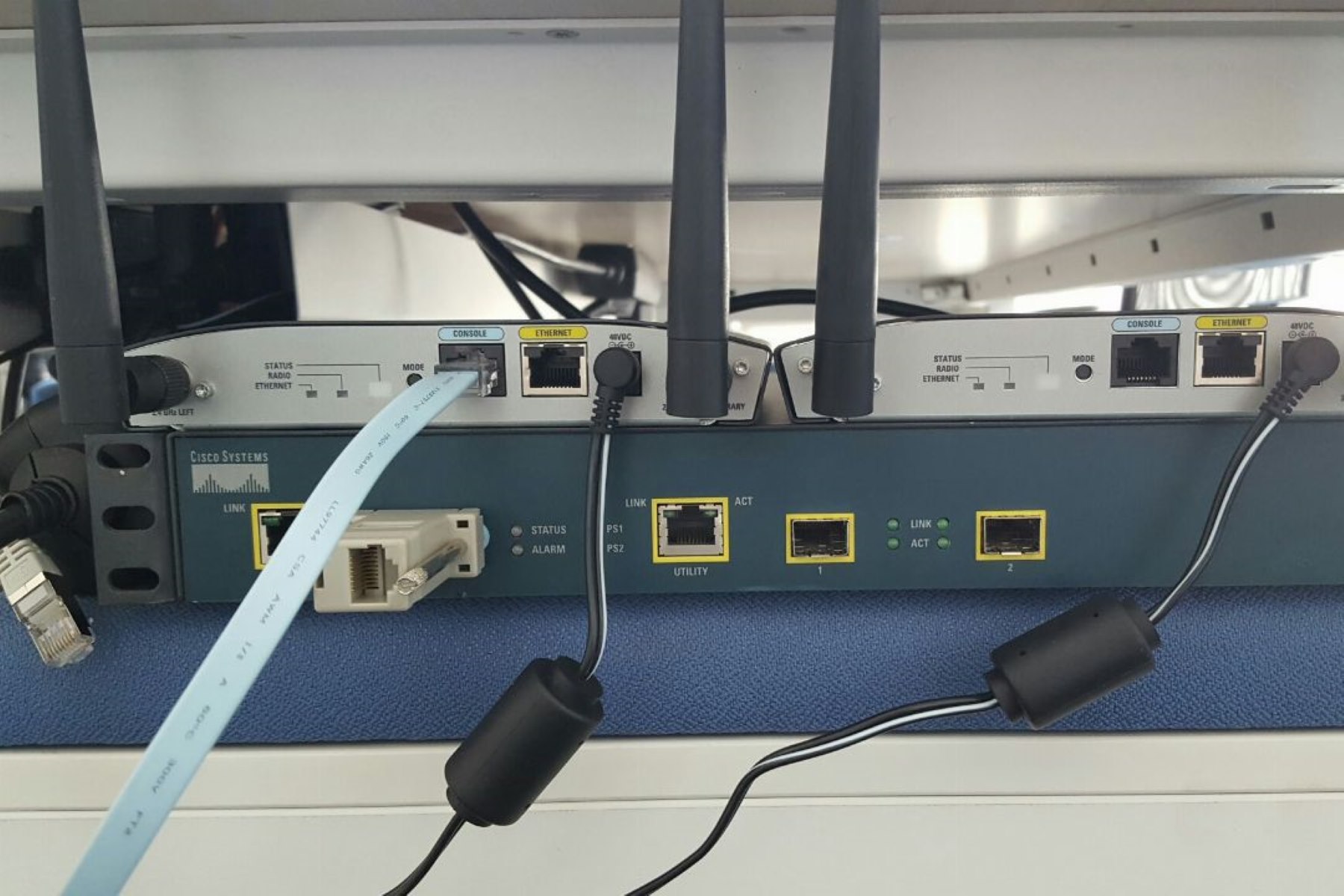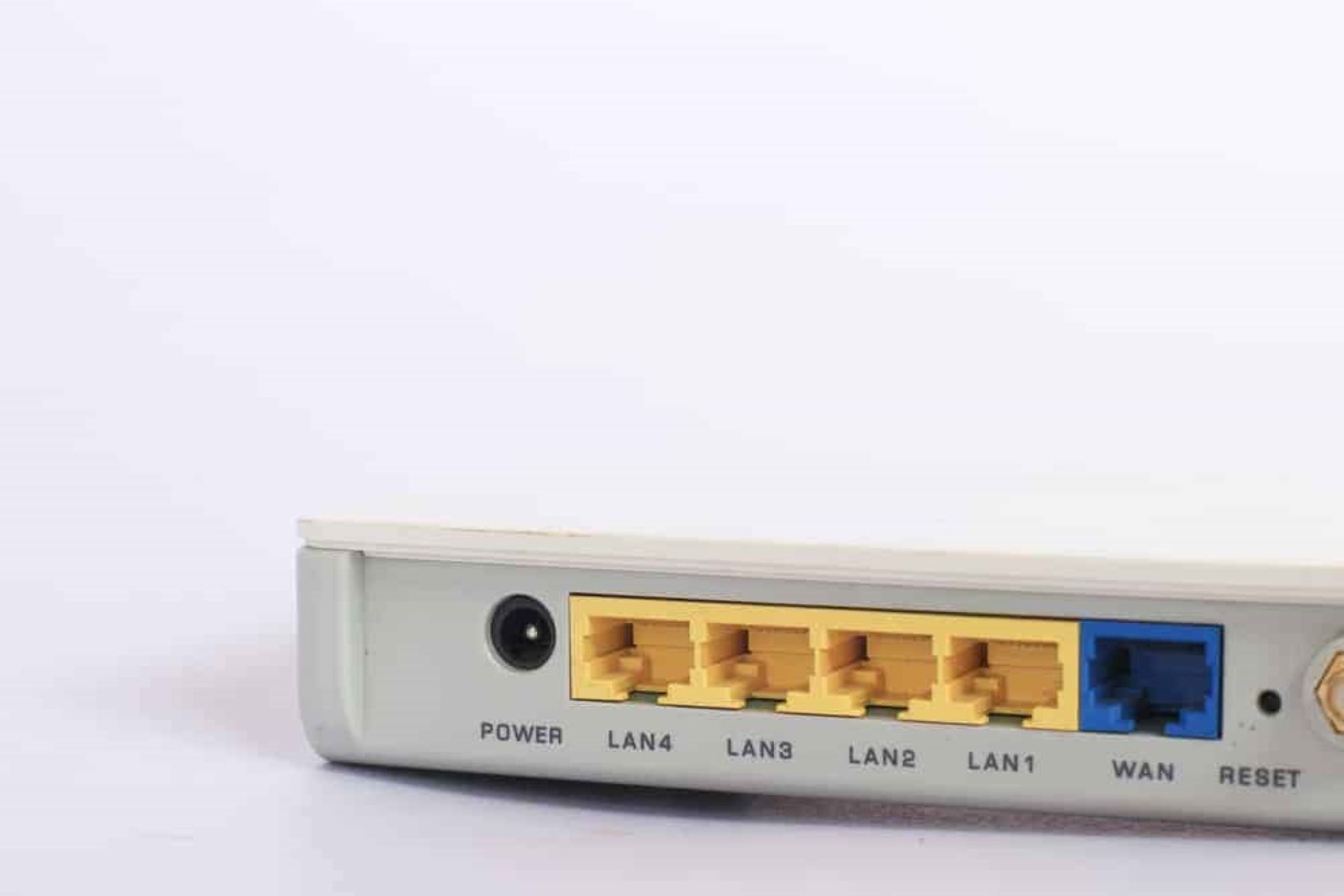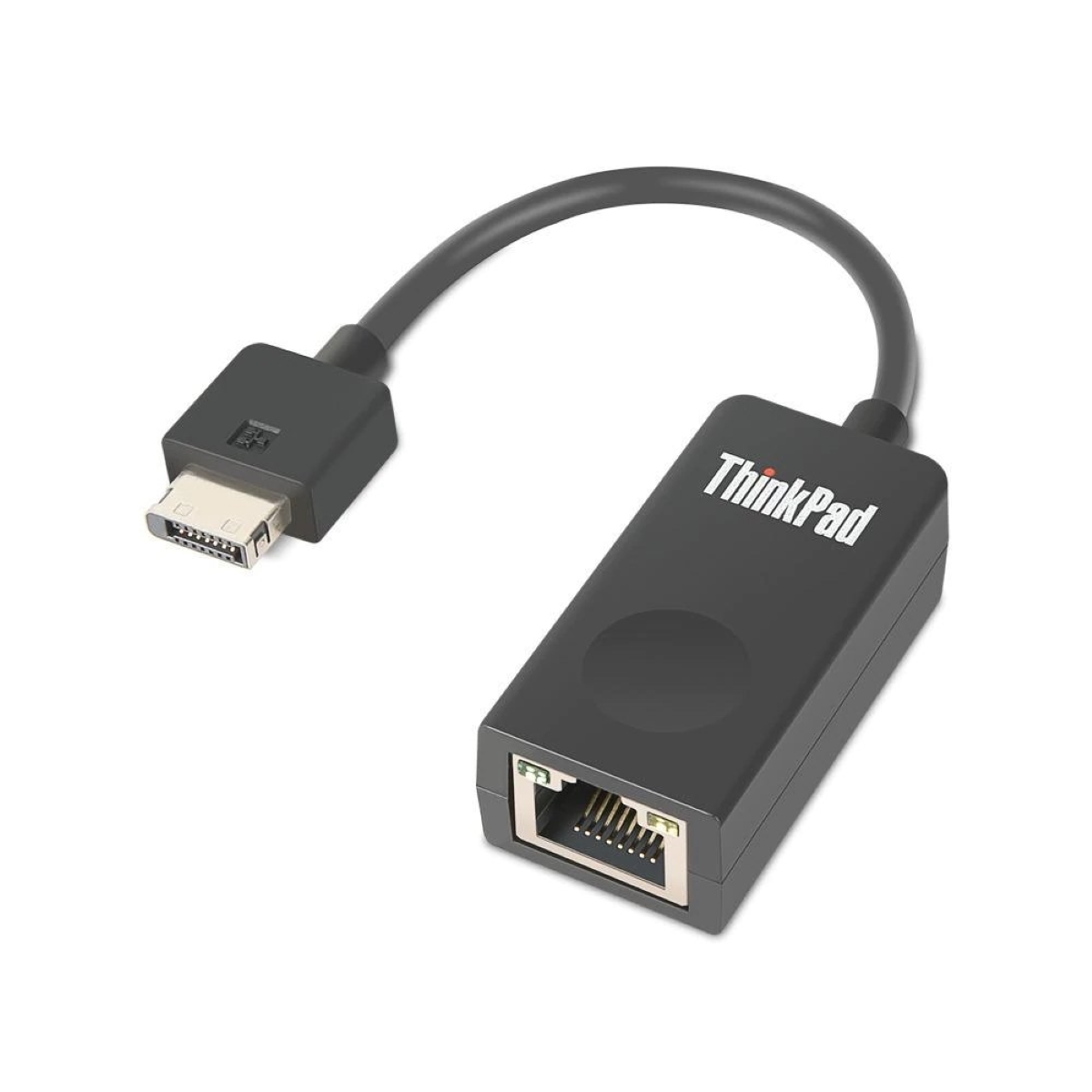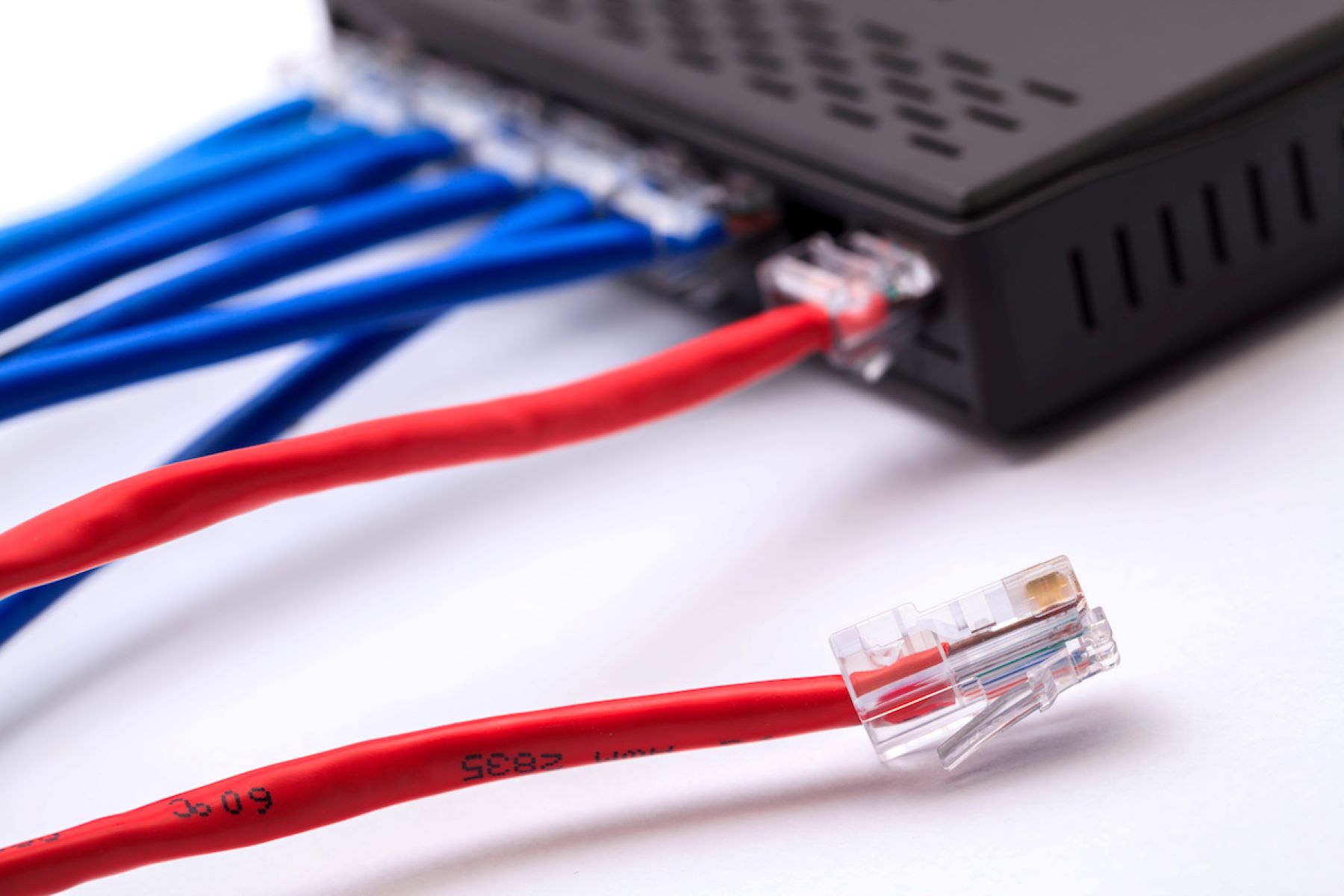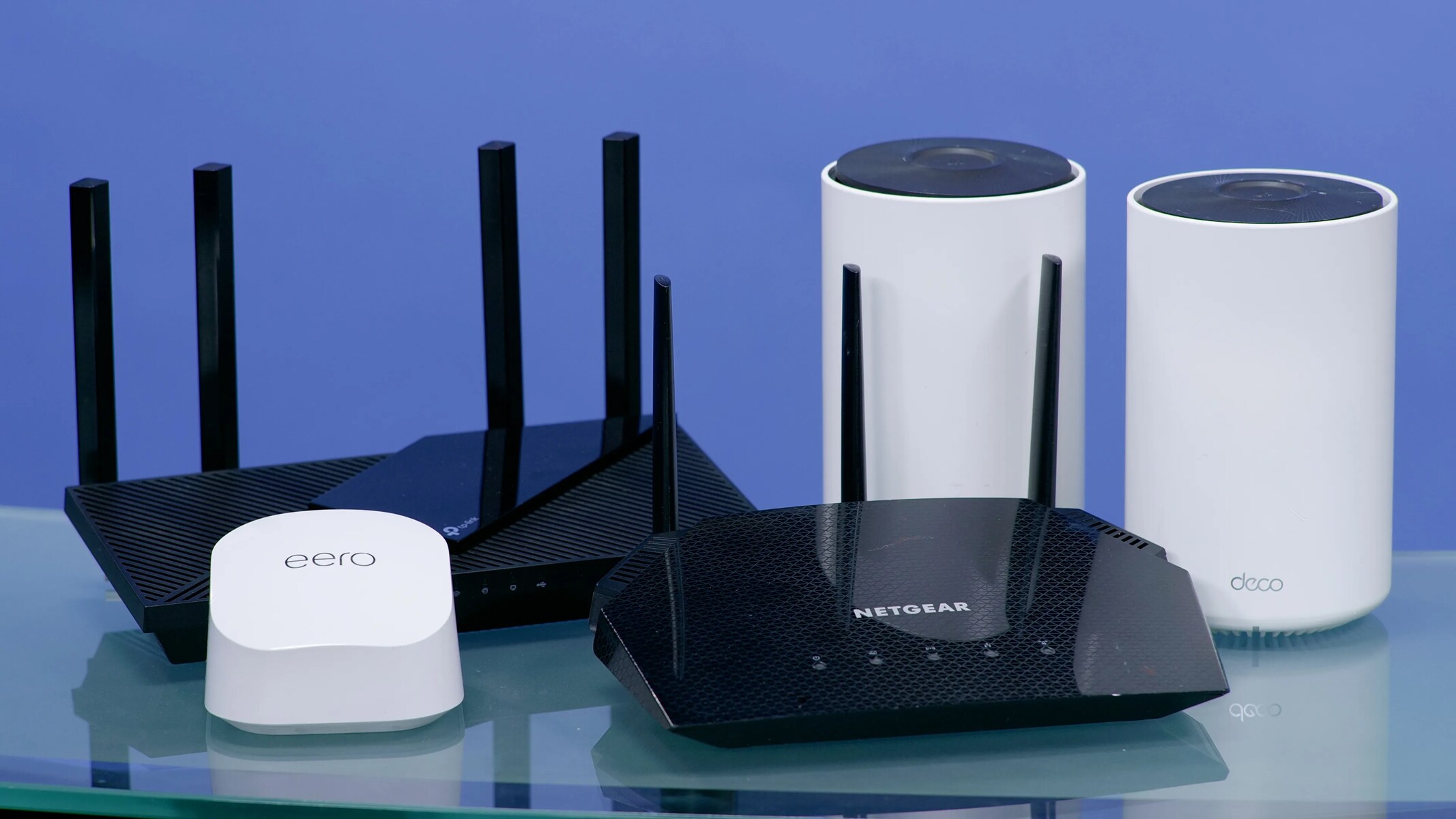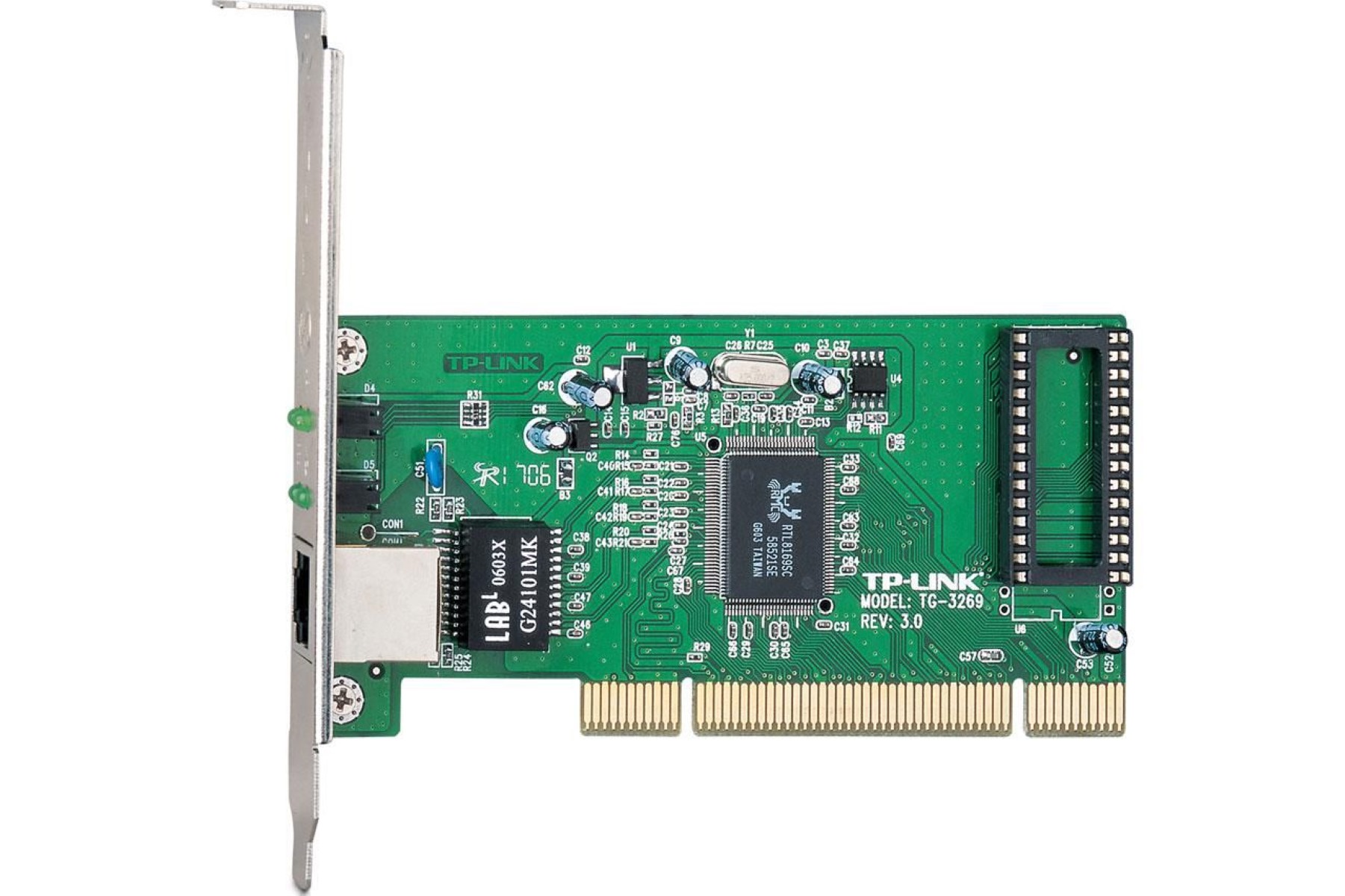Introduction
Ethernet standards and wireless technologies are crucial components of modern communication networks. They facilitate the transmission of data, voice, and video across various devices and systems. Understanding the layers at which Ethernet standards and wireless technologies operate is essential for network engineers, IT professionals, and anyone interested in the fundamentals of networking.
Ethernet, a widely adopted standard for wired networks, operates at the data link layer of the OSI model. This layer is responsible for data framing, error detection, and media access control. On the other hand, wireless technologies, such as Wi-Fi, operate at the physical layer and the data link layer of the OSI model. These wireless technologies offer the flexibility of connecting devices without the need for physical cables.
In this article, we will explore the layers at which Ethernet standards and some wireless technologies operate, focusing on IEEE 802.3 Ethernet and Wi-Fi based on IEEE 802.11 standards. By understanding these layers, we can gain insights into the functionalities and interactions of these technologies within a network infrastructure.
Let’s dive deeper into the specifics of Ethernet standards and wireless technologies to understand the layers at which they operate and how they contribute to seamless and reliable communication.
Ethernet Standards
Ethernet is a set of networking technologies that enable the transmission of data over local area networks (LANs). It is a standardized protocol defined by the Institute of Electrical and Electronics Engineers (IEEE) in the IEEE 802.3 standard. Ethernet has become the de facto standard for wired networking due to its versatility and widespread adoption.
The IEEE 802.3 Ethernet standard specifies the physical and data link layers of the OSI model, which are responsible for transmitting data between devices within a network. It defines the various aspects of Ethernet, such as the encoding scheme, signaling methods, and media access control (MAC).
One of the key features of Ethernet is its ability to operate over different types of media, including twisted-pair copper cables, fiber-optic cables, and coaxial cables. These media provide varying bandwidths and transmission distances, allowing Ethernet to be deployed in a wide range of network environments.
The most common Ethernet variant is 10BASE-T, which operates at a maximum data rate of 10 megabits per second (Mbps) over twisted-pair copper cables. As technology advanced, newer Ethernet standards were introduced, such as 100BASE-TX (Fast Ethernet) and 1000BASE-T (Gigabit Ethernet), offering higher data rates of 100 Mbps and 1 Gbps, respectively.
With the ever-increasing demand for faster network speeds, Ethernet standards continue to evolve. Today, we have standards such as 10GBASE-T (10 Gigabit Ethernet) and 40GBASE-T (40 Gigabit Ethernet), enabling high-speed data transmission over twisted-pair copper cables.
Ethernet standards also define the data link layer protocol, which includes the Ethernet frame structure, error detection mechanisms, and MAC addressing. The Ethernet frame consists of various fields, such as the preamble, destination and source MAC addresses, type/length, payload, and CRC (Cyclic Redundancy Check).
The MAC layer of Ethernet governs how devices on a network access and transmit data. It employs the CSMA/CD (Carrier Sense Multiple Access with Collision Detection) mechanism to detect and resolve collisions when multiple devices attempt to transmit data simultaneously.
Overall, Ethernet standards provide the foundation for efficient and reliable data communication in local area networks. By adhering to these standards, network administrators can ensure interoperability, scalability, and compatibility between different Ethernet-enabled devices.
IEEE 802.3 Ethernet
The Institute of Electrical and Electronics Engineers (IEEE) established the IEEE 802.3 Ethernet standard to define the specifications for Ethernet networks. This widely adopted standard ensures interoperability and compatibility among different Ethernet devices and systems.
IEEE 802.3 Ethernet defines the physical layer and data link layer protocols of the OSI model. The physical layer is responsible for the transmission and reception of data over the network medium, while the data link layer handles data framing, error detection, and media access control.
At the physical layer, the standard specifies the encoding scheme and signaling methods used for transmitting data. The most common encoding scheme is Manchester encoding, which represents digital data as transitions between high and low voltage levels. Manchester encoding ensures reliable data synchronization between transmitting and receiving devices.
For media access control, IEEE 802.3 Ethernet utilizes the Carrier Sense Multiple Access with Collision Detection (CSMA/CD) mechanism. CSMA/CD allows multiple devices to share the network medium and detects collisions when two or more devices transmit data simultaneously. Upon detecting a collision, CSMA/CD initiates a collision resolution process to avoid data packet corruption.
IEEE 802.3 Ethernet also defines various Ethernet frame types. The Ethernet II frame format is commonly used and includes fields such as the destination and source MAC addresses, type/length, payload, and cyclic redundancy check (CRC) for error detection.
Additionally, the IEEE 802.3 standard covers different Ethernet speeds and media types. It specifies standards such as 10BASE-T, 100BASE-TX, and 1000BASE-T, which correspond to Ethernet’s data rates of 10 Mbps, 100 Mbps, and 1 Gbps, respectively. These standards define the characteristics and limitations of the physical media, such as twisted-pair copper cables or fiber-optic cables, used for transmitting Ethernet signals.
Furthermore, the IEEE 802.3 Ethernet standard supports full-duplex and half-duplex communication modes. In full-duplex mode, devices can simultaneously transmit and receive data, doubling the effective bandwidth. Half-duplex mode allows devices to either transmit or receive data at a given time, which is suitable for environments with lower data transfer requirements.
Overall, IEEE 802.3 Ethernet provides a comprehensive framework for the implementation and operation of Ethernet networks. It ensures compatibility and standardization, enabling the seamless integration of Ethernet devices from multiple vendors and facilitating the scalable deployment of Ethernet networks in various settings.
Ethernet Layer
The Ethernet layer, also known as the data link layer, is a crucial component of Ethernet networks. It is responsible for organizing and transmitting data packets between devices within a network.
At the Ethernet layer, data is encapsulated into frames, which consist of various fields that provide essential information for reliable and efficient communication. These fields include the preamble, destination and source MAC addresses, type/length, payload, and cyclic redundancy check (CRC).
The preamble field is a sequence of alternating 0s and 1s that helps synchronize the transmitting and receiving devices. It allows devices to establish communication and ensures accurate data transmission.
The MAC addresses in the Ethernet frame identify the source and destination devices involved in the communication. Each Ethernet-enabled device has a unique MAC address assigned during manufacturing. This addressing scheme enables devices to send data specifically to the intended recipient.
The type/length field specifies the type of data or the length of the payload in the Ethernet frame. It indicates the protocol or service to which the data belongs, allowing the recipient device to process the data correctly.
The payload field contains the actual data being transmitted. It can include any type of information – from simple text messages to complex multimedia files. The payload length can vary depending on the type of data being transmitted.
To ensure data integrity, the Ethernet frame includes a cyclic redundancy check (CRC). The CRC value is calculated based on the data content of the frame. Upon receiving the frame, the recipient device recalculates the CRC value and compares it with the CRC value in the frame. If the calculated CRC matches the received CRC, it indicates that the data transmission was successful without any errors.
The Ethernet layer also governs how devices access and transmit data over the network medium. It utilizes the Carrier Sense Multiple Access with Collision Detection (CSMA/CD) mechanism. This mechanism ensures that multiple devices can share the network medium and detect and resolve collisions when two or more devices attempt to transmit data simultaneously.
Overall, the Ethernet layer plays a vital role in the seamless and reliable transmission of data within Ethernet networks. It ensures that data is properly framed, identified, and delivered to the intended recipient while maintaining data integrity and optimizing network performance.
Wireless Technologies
Wireless technologies have revolutionized the way we connect and communicate in the digital age. With the advancement of wireless networking, devices can now communicate without the need for physical cables, providing flexibility and freedom of movement.
Wireless technologies utilize radio waves to transmit and receive data between devices. They operate at the physical layer and the data link layer of the OSI model, enabling wireless communication across various devices and systems.
One of the most widely used wireless technologies is Wi-Fi, which stands for Wireless Fidelity. Wi-Fi operates based on the IEEE 802.11 standards defined by the Institute of Electrical and Electronics Engineers. These standards specify the protocols and functionalities required for wireless local area networks (WLANs).
Wi-Fi allows devices such as smartphones, laptops, and IoT devices to connect to networks wirelessly. It provides reliable and high-speed data transmission, making it ideal for both personal and business environments. Wi-Fi operates in unlicensed frequency bands, usually at 2.4 GHz or 5 GHz, depending on the specific standards supported by the device.
Wireless technologies, including Wi-Fi, rely on access points (APs) to establish connectivity. Access points act as a bridge between the wireless devices and the wired network infrastructure, allowing seamless integration between wireless and wired networks. They provide wireless coverage and manage the communication between wireless devices and the network.
Wi-Fi enables users to access the internet, share files, and connect with other devices within the same network. It also supports various encryption methods, such as WEP, WPA, and WPA2, to ensure the security and privacy of the transmitted data.
Besides Wi-Fi, there are other wireless technologies like Bluetooth, Zigbee, and NFC (Near Field Communication), each serving specific purposes and applications. Bluetooth, for example, is commonly used for short-range wireless communication between devices, such as wireless headphones and keyboards. Zigbee is designed for low-power, low-data-rate applications in home automation and industrial settings. NFC, on the other hand, allows devices to establish communication by simply touching or bringing them close together.
These wireless technologies have transformed the way we connect and interact with the digital world. They have enabled the rise of mobile computing, the Internet of Things (IoT), and the seamless integration of devices in our daily lives.
Wireless technologies offer convenience, flexibility, and mobility. They have become an essential part of our modern connectivity landscape, enhancing productivity, communication, and entertainment capabilities for individuals and businesses alike.
Wi-Fi
Wi-Fi, short for Wireless Fidelity, has become an integral part of our daily lives, providing wireless connectivity for various devices. It operates based on the IEEE 802.11 standards set by the Institute of Electrical and Electronics Engineers (IEEE).
With Wi-Fi, devices such as smartphones, laptops, tablets, and IoT devices can connect to wireless local area networks (WLANs) and access the internet, share files, and communicate with other devices within the network range.
Wi-Fi operates in unlicensed frequency bands, typically 2.4 GHz or 5 GHz, depending on the supported standards. These frequency bands allow multiple devices to communicate simultaneously, making Wi-Fi a viable option in crowded areas such as homes, offices, and public spaces.
Wi-Fi networks consist of access points (APs) that act as central hubs for wireless connectivity. The APs receive data from devices and relay it to the wired network infrastructure, enabling seamless integration between the wireless and wired networks.
Wi-Fi networks can be secured with encryption protocols to protect data transmission. The most common protocols include Wired Equivalent Privacy (WEP), Wi-Fi Protected Access (WPA), and WPA2. These protocols ensure that data transmitted over Wi-Fi networks remains private and secure from unauthorized access.
Wi-Fi connections are established through a process called association. Devices scan for available networks, authenticate with the network using a password or other identification method, and then associate with the chosen network. Once the association is established, the device can communicate with other devices within the network.
Wi-Fi standards continue to evolve to keep up with the demand for faster and more reliable wireless connectivity. The most recent standard is IEEE 802.11ax, also known as Wi-Fi 6, which offers improved performance, increased capacity, and reduced latency.
Wi-Fi has transformed the way we work, communicate, and access information. It has enabled the proliferation of mobile devices, IoT applications, and smart home technologies. Wi-Fi’s convenience, flexibility, and ubiquity make it a key enabler of our connected world.
Whether in homes, offices, or public spaces, Wi-Fi has become an essential part of our daily lives, empowering us to stay connected and productive in a wireless world.
IEEE 802.11 Standards
The IEEE 802.11 standards, established by the Institute of Electrical and Electronics Engineers (IEEE), define the specifications for wireless local area networks (WLANs) that operate using Wi-Fi technology. These standards provide the foundation for wireless communication, ensuring interoperability and compatibility among Wi-Fi devices.
The IEEE 802.11 standard family encompasses various versions, each offering different features, data rates, and ranges. Some of the commonly encountered versions include IEEE 802.11a, IEEE 802.11b, IEEE 802.11g, IEEE 802.11n, IEEE 802.11ac, and IEEE 802.11ax.
The IEEE 802.11a standard, introduced in 1999, operates in the 5 GHz frequency band and supports data rates up to 54 megabits per second (Mbps). In contrast, IEEE 802.11b, which arrived in 1999 as well, operates in the 2.4 GHz frequency band and has a data rate of up to 11 Mbps. IEEE 802.11g, released in 2003, also operates in the 2.4 GHz frequency band but offers higher data rates up to 54 Mbps.
IEEE 802.11n, introduced in 2009, brought significant improvements to Wi-Fi networks. It supports both the 2.4 GHz and 5 GHz frequency bands, utilizes multiple antennas for enhanced performance, and offers data rates up to 600 Mbps.
IEEE 802.11ac, launched in 2013, operates in the 5 GHz frequency band and greatly improves performance and capacity. With support for multiple antennas and wider channels, IEEE 802.11ac delivers data rates up to several gigabits per second (Gbps), enabling faster and more reliable connections.
The most recent addition to the family is IEEE 802.11ax, also known as Wi-Fi 6. Released in 2019, Wi-Fi 6 focuses on increasing efficiency and capacity in dense environments. It introduces advanced technologies such as orthogonal frequency-division multiple access (OFDMA) and target wake time (TWT), enhancing performance, reducing latency, and optimizing power usage.
Each version of the IEEE 802.11 standard aims to improve wireless connectivity, offering increased data rates, extended range, improved security, and better overall performance. These standards ensure that Wi-Fi devices from different manufacturers can communicate seamlessly and provide users with a consistent and reliable wireless experience.
It’s important to note that backward compatibility is retained in Wi-Fi standards. Devices supporting newer versions can still connect to older Wi-Fi networks using the respective standards. This backward compatibility allows for smooth transitions and the coexistence of devices with varying capabilities within a network.
The continuous evolution of the IEEE 802.11 standards reflects the ever-growing demand for faster, more reliable wireless connectivity. As technology progresses, the standards will continue to evolve, enabling new possibilities and innovations in wireless networking.
Wireless Layer
The wireless layer, also known as the physical layer and the data link layer, is a critical component of wireless technologies such as Wi-Fi. It plays a crucial role in transmitting and receiving data over wireless networks, ensuring reliable communication between devices.
At the wireless layer, data is transmitted using electromagnetic waves in the form of radio frequency signals. These signals carry encoded data and propagate through the air to reach other wireless devices within the network range.
The physical layer of the wireless layer is responsible for transmitting and receiving these signals. It encompasses aspects such as modulation, frequency selection, power control, and error detection in wireless communication.
Modulation refers to the process of encoding data onto the radio frequency signals. Various modulation techniques, such as amplitude modulation, frequency modulation, and phase modulation, are used to represent binary data as changes in signal amplitude, frequency, or phase.
Frequency selection involves determining the frequency at which the wireless communication will occur. It is based on the available frequency bands specified by the wireless standards, such as the 2.4 GHz and 5 GHz frequency bands used in Wi-Fi.
Power control is essential to optimize the transmission range and signal strength of wireless devices. It ensures that devices transmit an adequate signal level to maintain reliable communication without causing interference to other devices.
In addition to the physical layer, the data link layer of the wireless layer governs the organization and framing of data for wireless transmission. It handles tasks such as data encapsulation into frames, error detection, and media access control.
Data encapsulation involves placing data into frames that include essential information for wireless communication. This information includes synchronization bits, sender and receiver addresses, error detection codes, and payload data.
Error detection mechanisms, such as cyclic redundancy check (CRC) codes, are implemented at the data link layer to ensure data integrity. These codes enable the recipient device to detect and correct errors that may occur during wireless transmission.
Media access control is another crucial function of the data link layer. It determines how devices gain access to the wireless medium and transmit data without causing conflicts or collisions. Methods such as carrier sense multiple access (CSMA) are used to coordinate the transmission of wireless data.
Overall, the wireless layer is responsible for managing the physical and data link layers of wireless communication. It ensures that data is reliably transmitted and received over wireless networks, enabling seamless connectivity for wireless devices within the network range.
Conclusion
Ethernet standards and wireless technologies play vital roles in today’s communication networks. Understanding the layers at which these technologies operate provides insights into their functionalities and interactions within network infrastructures.
Ethernet standards, such as the IEEE 802.3 Ethernet, define the protocols for wired networks, operating at the data link layer of the OSI model. These standards ensure reliable data transmission, media access control, and error detection for Ethernet-enabled devices. With the ability to operate over different media types and evolving data rates, Ethernet continues to be the preferred choice for wired networking.
Wireless technologies, on the other hand, operate at the physical layer and data link layer, providing the freedom of wireless connectivity. Wi-Fi, based on the IEEE 802.11 standards, has become ubiquitous and allows devices to connect to wireless networks effortlessly. Wi-Fi offers flexibility, high-speed data transmission, and support for encryption protocols to ensure secure communication.
Together, Ethernet standards and wireless technologies enable seamless communication and connectivity across diverse devices and systems. They have transformed the way we work, communicate, and access information, empowering individuals and businesses with mobility, productivity, and scalability.
As technology continues to advance, Ethernet and wireless technologies will continue to evolve. New Ethernet standards will accommodate higher data rates and support new media types, while wireless technologies will strive to improve performance, capacity, and security.
In the dynamic landscape of networking, staying up to date with the latest Ethernet standards and wireless technologies is essential for network engineers, IT professionals, and anyone interested in the world of connectivity. By familiarizing ourselves with these technologies and understanding the layers at which they operate, we can make informed decisions to meet the demands of an increasingly connected world.
Whether it’s the reliable wired connections of Ethernet or the flexibility and freedom of wireless technologies, the interplay between these technologies forms the backbone of modern communication networks.







